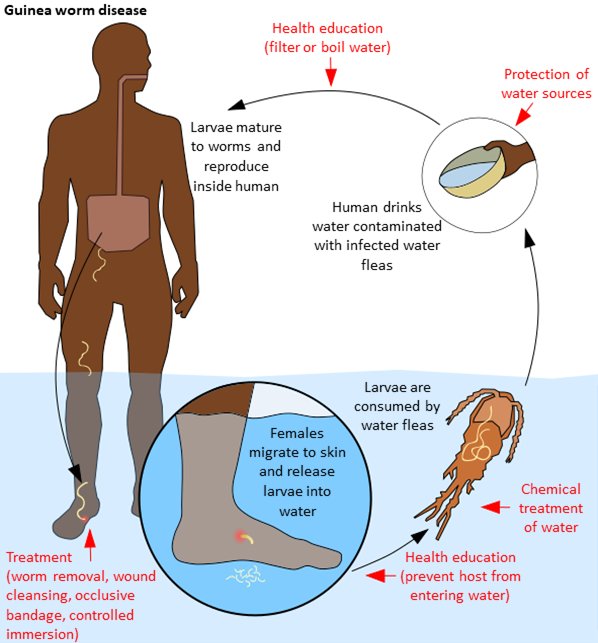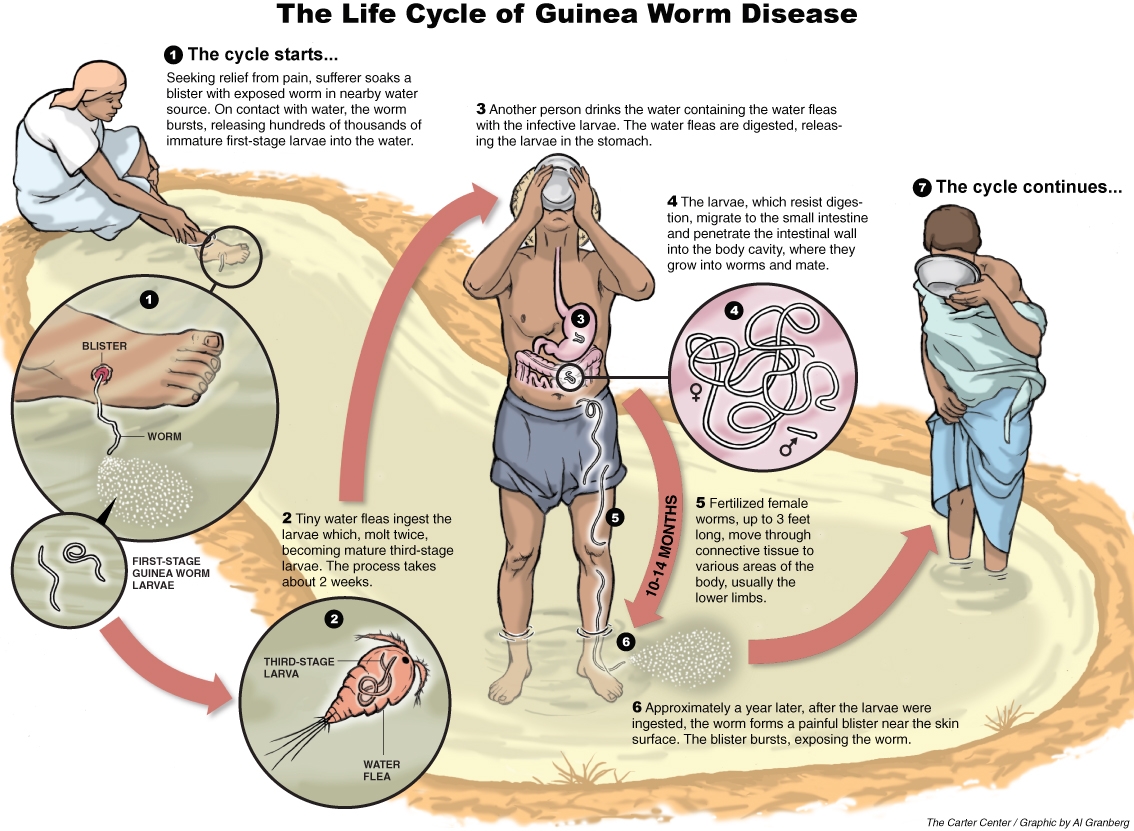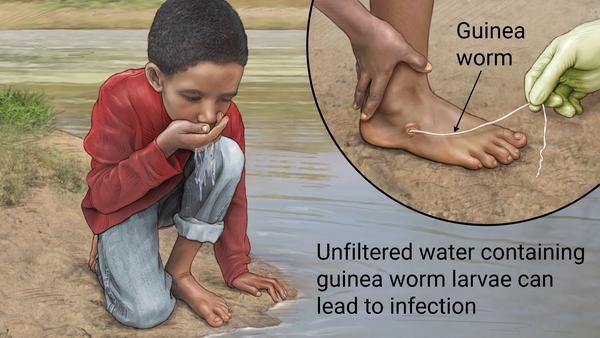Guinea worm disease (GWD): near to eradicate
Guinea worm disease (GWD) is a parasitic disease caused by the Dracunculus medinensis parasite. GWD is spread by drinking water that contains Guinea worm larvae, which are immature forms of the worm.
WHO says that Guinea worm disease (GWD) (Dracunculiasis) is the first parasitic disease near to eradication.

Overview of Guinea worm disease (GWD)
Guinea-worm disease is caused by the parasitic worm Dracunculus medinensis or Guinea-worm. This worm is the largest of the tissue parasite affecting humans. The adult female, which carries about 3 million embryos, can measure 600 to 800 mm in length and 2 mm in diameter.
When a person drinks contaminated water from ponds or shallow open wells, the cyclops is dissolved by the gastric acid of the stomach and the larvae are released and migrate through the intestinal wall.
After 100 days, the male and female meet and mate. The male becomes encapsulated and dies in the tissues while the female moves down the muscle planes. After about one year of the infection, the female worm emerges, usually from the feet, releasing thousands of larvae and thus repeating the life cycle.
Also Read: Common Myths About Protein For Bodybuilders
Symptoms
Guinea-worm disease is rarely fatal. Frequently, however, the patient remains sick for several months, mainly because:
- The emergence of the worm, sometimes several, is accompanied by painful oedema, intense generalised pruritus, blistering and an ulceration of the area from which the worm emerges;
- The migration and emergence of the worms occur in sensitive parts of the body, sometimes the articular spaces can lead to permanent disability;
- Ulcers caused by the emergence of the worm invariably develop secondary bacterial infections which exacerbate inflammation and pain resulting in temporary disability; and
- Accidental rupture of the worm in the tissue spaces can result in serious allergic reactions.
The epidemiology of the disease is determined largely by the use of open stagnant water sources such as ponds and sometimes shallow or step wells. Human-made ponds are the main source of transmission.

Guinea-worm disease is seasonal, occurring with two broad patterns found in endemic areas of Africa, depending on climatic factors. In the Sahelian zone, transmission generally occurs in the rainy season (May to August). In the humid savanna and forest zone, the peak occurs in the dry season (September to January).
Also Read: Common Myths About Protein For Bodybuilders
Treatment
No drug is available to prevent or heal this parasitic disease. Dracunculiasis is, however, relatively easy to eliminate and eventually eradicate.
Guinea-worm disease is a vulnerable disease: humans alone are responsible for maintaining its fragile transmission cycle. It is therefore possible to permanently curtail transmission by applying the following measures:
- Effective surveillance to detect all cases within 24 hours of worm emergence and containment of all cases;
- Ensuring access to safe drinking water and converting unsafe sources to safe ones;
- The construction of copings around well heads or the installation of boreholes with handpumps. This would prevent not only dracunculiasis but also diarrhoeal diseases;
- Regular and systematic filtering of drinking water derived from ponds and shallow unprotected wells or from surface water. Finely meshed cloth or, better still, a filter made from a 0.15 mm nylon mesh, is all that is needed to filter out the cyclops from the drinking water;
- Treatment of unsafe water sources with temephos to kill the cyclops;
- Health education and social mobilization to encourage affected communities to adopt healthy drinking water behaviour.
If these measures are implemented by village communities, the goal of eradicating guinea-worm disease will be achieved.
